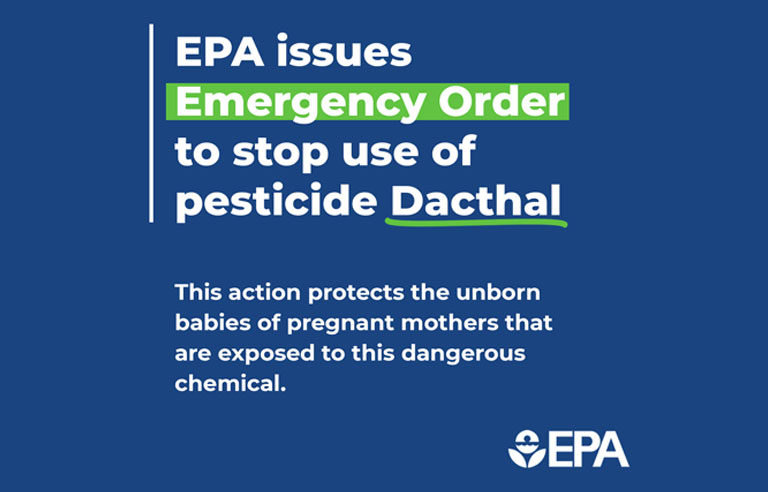
Photo: Environmental Protection Agency
Washington — Citing health risks to workers and unborn children, the Environmental Protection Agency has taken action – effective immediately – to discontinue the use of the weed-control pesticide dimethyl tetrachloroterephthalate.
An emergency order issued Aug. 6 suspends all registrations of the pesticide – also known as DCPA or dacthal – under the Federal Insecticide, Fungicide and Rodenticide Act of 1947. The move is the first of its kind in almost 40 years, after “several years of unprecedented efforts by the Biden-Harris administration to require submission of long-overdue data” related to the pesticide, an agency press release states.
“DCPA is so dangerous that it needs to be removed from the market immediately,” Michal Freedhoff, assistant administrator of the EPA Office of Chemical Safety and Pollution Prevention, said in the release.
DCPA is applied as a weed killer in agricultural and nonagricultural environments and is commonly used around broccoli, Brussels sprouts, cabbage and onions.
EPA cautions that pregnant women exposed to DCPA, even unknowingly, may experience a negative impact on fetal thyroid hormone levels. This may trigger potentially irreversible effects such as low birth weight, impaired brain development and motor skills, and decreased IQ.
A May 2023 agency risk assessment found multiple health risks associated with DCPA use and application, “even when personal protective equipment and engineering controls are used,” the release states. Additionally, EPA estimates that pregnant women handling DCPA products could be exposed to levels four to 20 times greater than what’s considered safe for unborn children.
McCraren Compliance offers many opportunities in safety training to help circumvent accidents. Please take a moment to visit our calendar of classes to see what we can do to help your safety measures from training to consulting.
Original article published by Safety+Health an NSC publication


